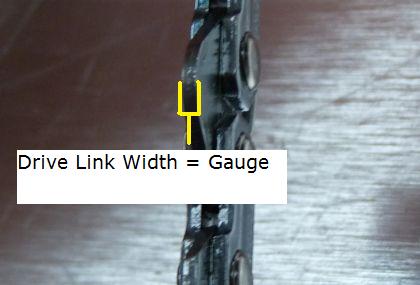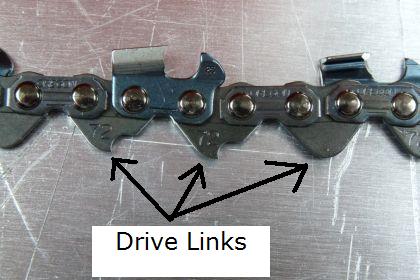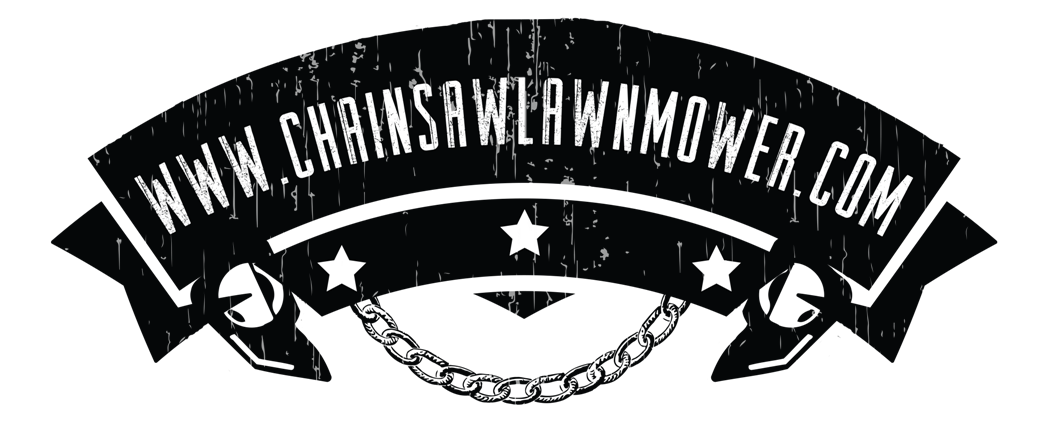Chain Sizing Guide
How to Measure Your Chain for Replacement
Chainsaw chains are available in almost limitless combinations of sizes, types, and features. This is because chainsaws themselves also vary greatly in size and application, thus when it is time to change your chain it is vital to understand the correct measurements. This guide will show you the 3 chainsaw chain numbers required to identify the right chain for your model.
1. The Pitch ( describes how close together links are on the chain)
2. The Gauge (the width of the groove where the chain fits into the bar)
3. Number of Drive Links ( parts of the chain that fit into the guide bar)
To help calculate the pitch on your chain use this formula
(Pitch= distance between any 3 rivets on the chain, divided by 2)

This method may sound complicated but fortunately most guide bars have the information stamped onto it. This information is commonly located at the back of the bar where the saw is mounted.
The most common pitch found on guide bars are 3/8" and .325".
When looking at the gauge on your chainsaw chain this measures thickness of your drive links. the most common gauges are as follow:
1.6 (.063)
1.5 (.058)
1.3 (.050)
1.1 (.043)

The gauge measurement can often be displayed quite jumbled or mixed in with other numbers so one method to calculate it yourself is to grab a pair of callipers and measure the gauge ( without callipers this method is not recommended)
Finally, getting the right chainsaw chain will require counting the drive links. The number of links on your chain is not usually displayed like the pitch and gauge, or listed in the manual, thus they must be counted.
Counting the drive links are easy and can be seen from the image below.

When you know how to measure your bar and chain yourself, you'll be able to source the different kinds of replacements that fit your chainsaw model.















